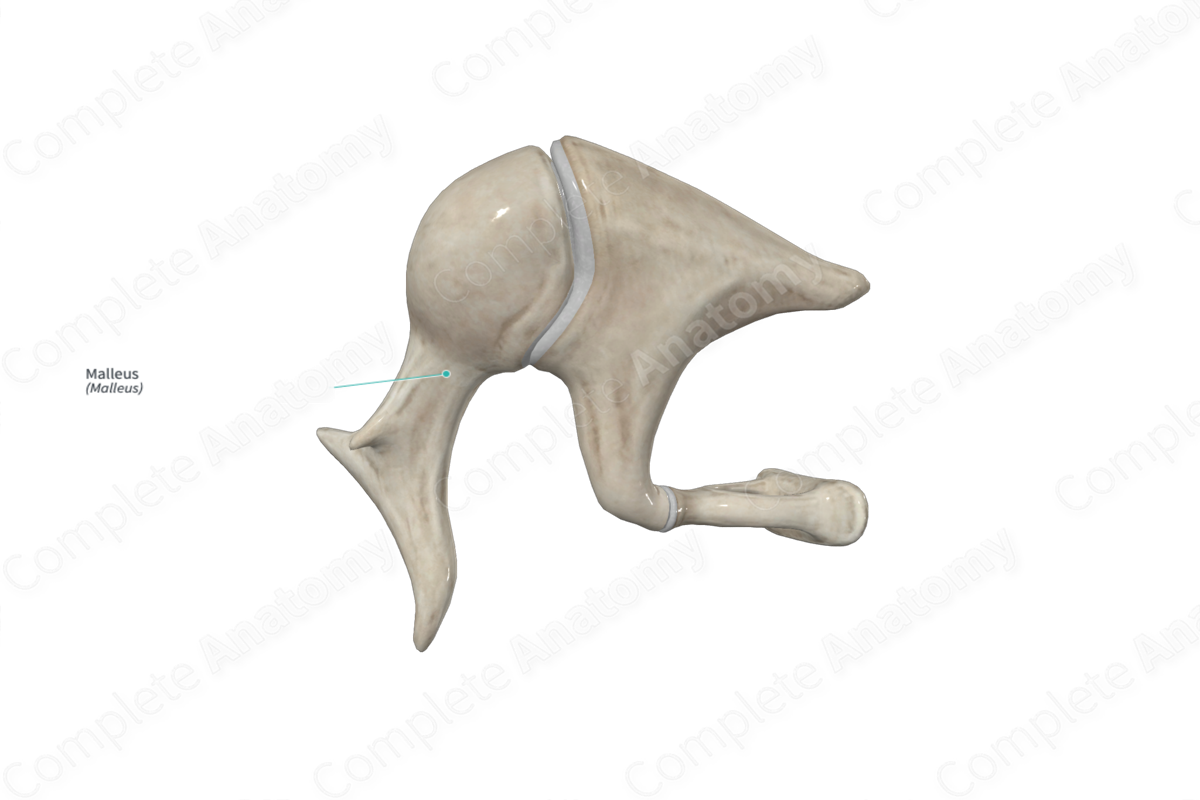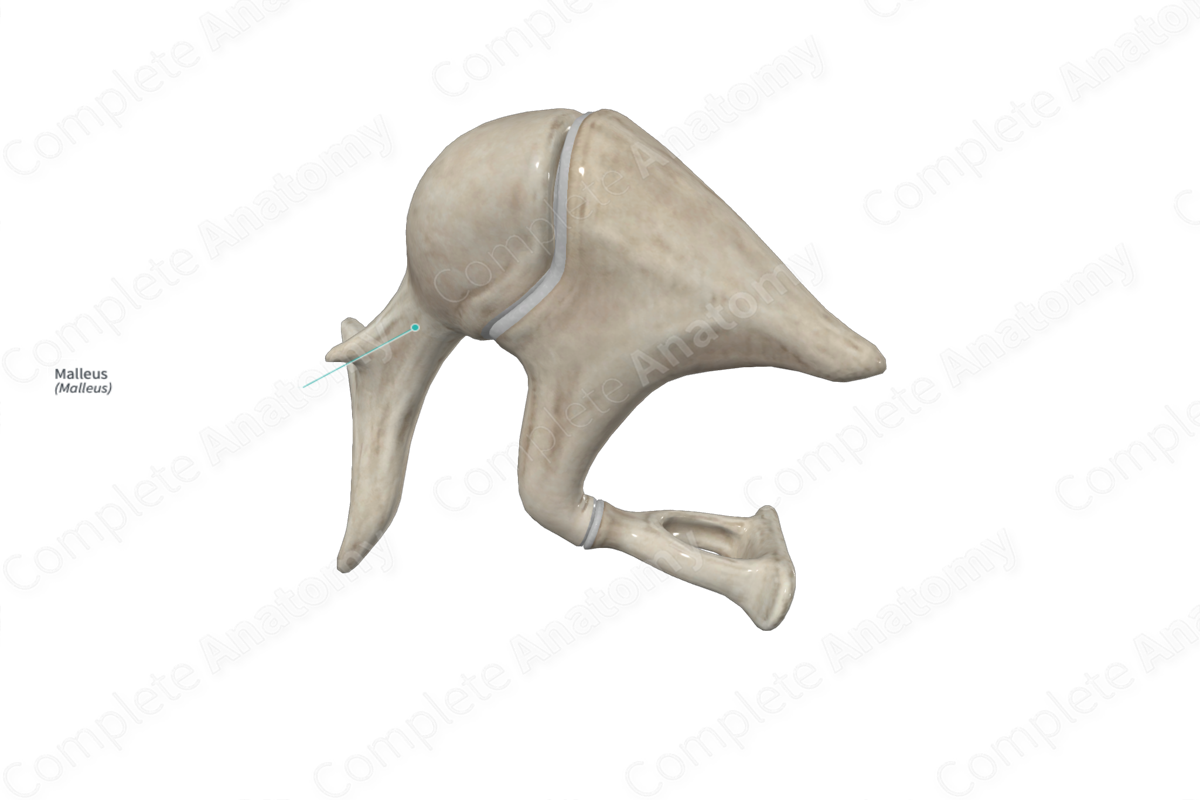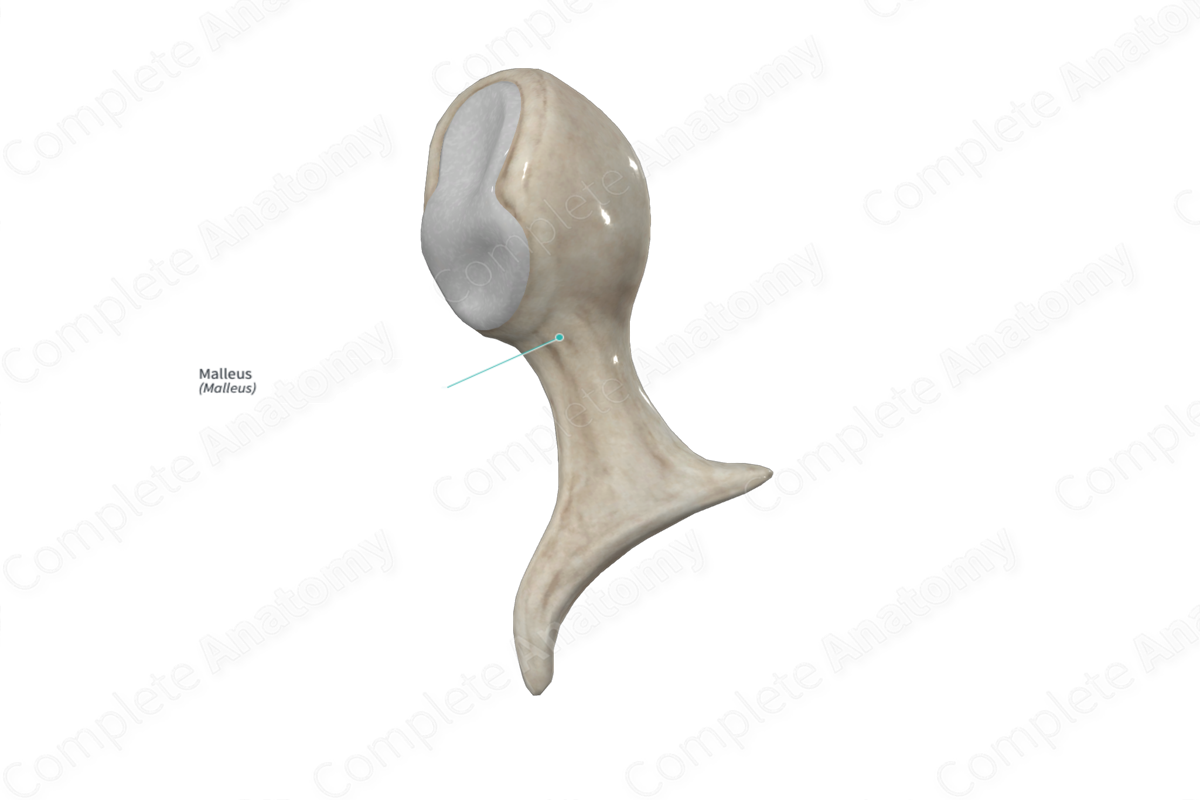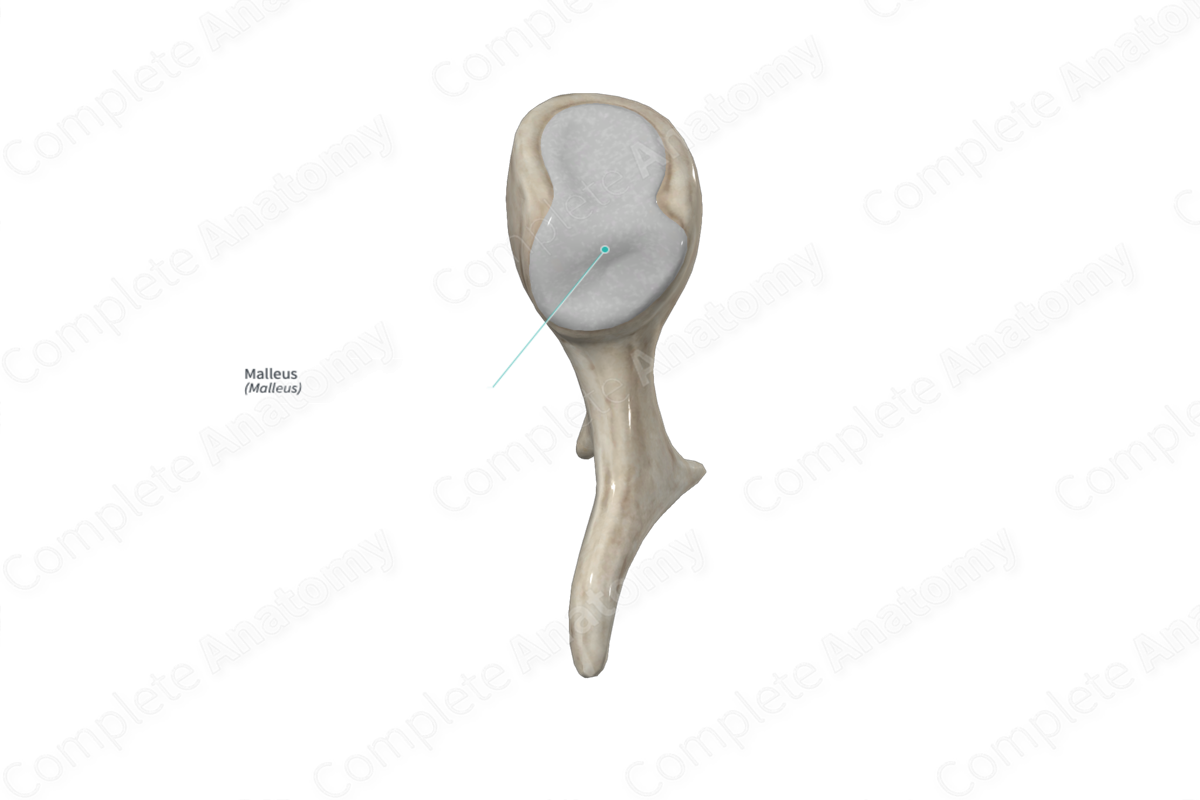
Quick Facts
Location: Tympanic cavity of the middle ear.
Bone Type: Irregular bone.
Key Features: Head, neck, handle, and anterior and lateral processes.
Articulates With: Incus.
Arterial Supply: Anterior tympanic and stylomastoid arteries.
Key Features & Anatomical Relations
The malleus is the largest of the three auditory ossicles, the other two being the incus and stapes. It is a small, hammer-like bone that is found in the tympanic cavity of the middle ear in the temporal bone. It is classified as an irregular bone and includes the following bony features:
- parts: head, neck, and handle;
- landmarks: articular facet for incus and anterior and lateral processes.
More information regarding these bony features can be found in the Parts and Landmarks tabs for this bone.
The malleus is located anterolateral to the incus, articulates with the incus at the incudomallear joint and attaches to the tympanic membrane.
Ossification
Ossification of the malleus occurs at two ossification centers, these are found in the:
- near the neck of the malleus, which appears in utero during the fourth month;
- anterior process of the malleus, which appears in utero during the sixth month.
The malleus is fully developed by the time of birth (Standring, 2016).
List of Clinical Correlates
- Dislocation
- Malleus ankylosis
- Cholesteatoma
References
Standring, S. (2016) Gray's Anatomy: The Anatomical Basis of Clinical Practice. Gray's Anatomy Series 41st edn.: Elsevier Limited.



